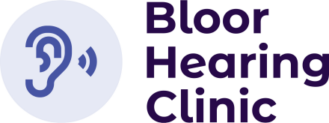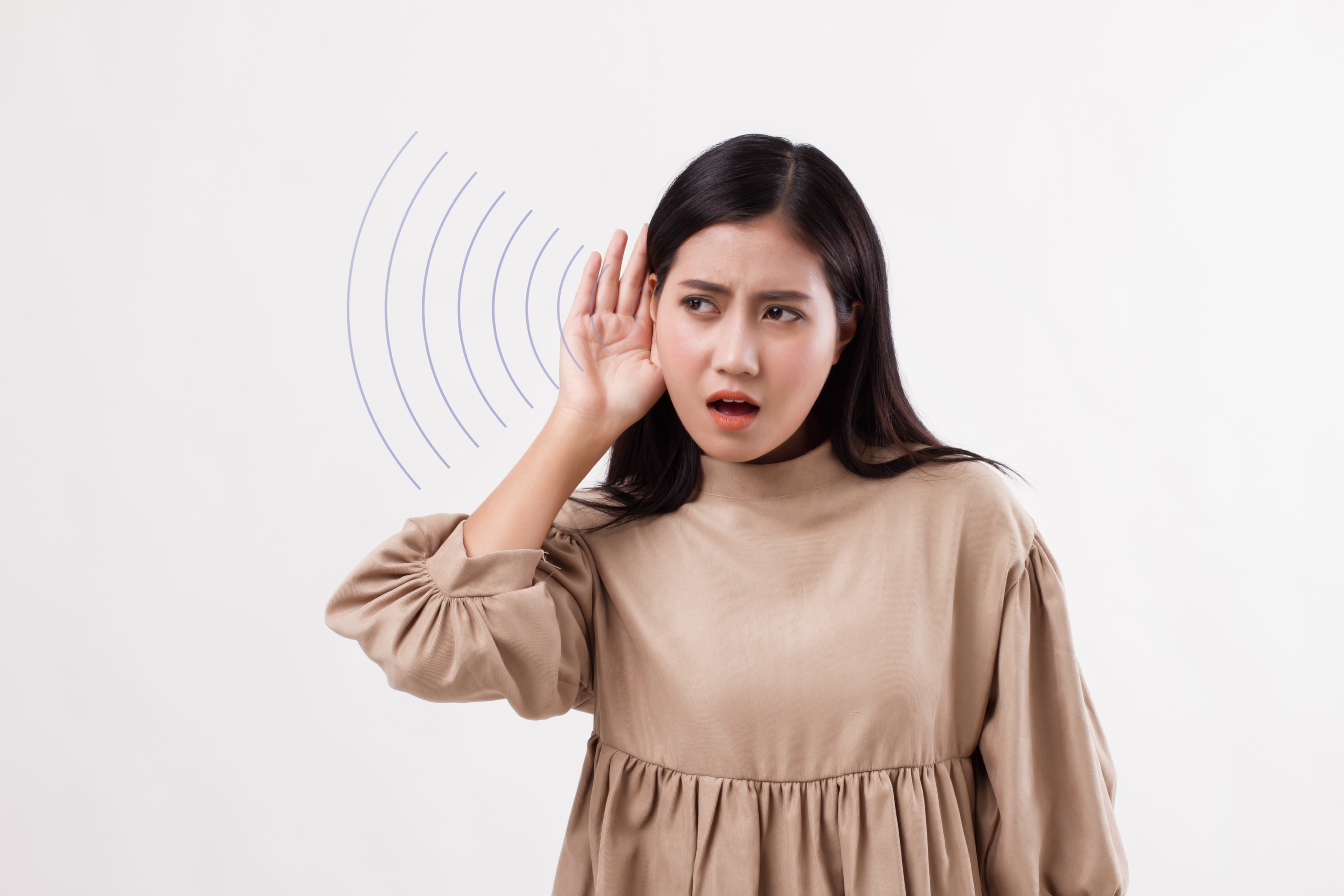
Our Blog
What Is Conductive Hearing Loss & What Can Be Done About It?
There are three main types of hearing loss: conductive, sensorineural, and mixed hearing loss. Each manifests differently and has distinct causes, symptoms, characteristics, and origins. Conductive hearing loss occurs when something obstructs sound from passing through the outer or middle ear, stopping it from reaching the inner ear. It affects a wide demographic, including children and the elderly.
There’s no way of telling conductive hearing loss apart from other types without a professional diagnosis from a qualified audiologist who can provide assessments such as a Toronto hearing test. However, you can watch out for signs by understanding its causes, incidence, manifestations, and even treatment, which we will cover in this blog. Read on.
Defining Conductive Hearing Loss
Conductive hearing loss (CHL) happens when sound cannot pass efficiently from the outer or middle part of the ear to the inner ear. This makes sounds seem quieter or muffled, even though the inner ear and nerves that process sound might still work fine.
Anyone can experience CHL, from young children to older adults. However, a study found it is more common in children, specifically among school-aged children in the Canadian Arctic, because of frequent ear infections. Meanwhile, chronic ear conditions or ear injuries were attributed to conductive hearing loss in adults. This hearing loss occurs when an obstruction or dysfunction in the outer or middle ear prevents sound from being conducted efficiently to the inner ear.
Unlike sensorineural hearing loss, which affects the auditory nerve or inner ear, CHL is often temporary and can be treated. We’ll dig deeper into these differences below.
Difference From Sensorineural Hearing Loss
Conductive hearing loss and sensorineural hearing loss (SNHL) are two types of hearing loss affecting different parts of the ear. For a quick comparison of the two, CHL is like a blocked or broken speaker. Sound can’t reach the inner ear properly, but fixing the blockage (like wax or an infection) often restores hearing. On the other hand, SNHL is like a damaged sound processor. The inner ear or nerve is affected, so the brain may not receive clear signals even if sound reaches it.
🔖 Helpful Article: Learn more about sensorineural hearing loss and treatments here. |
Two Types of Conductive Hearing Loss
Two types of conductive hearing loss exist: temporary (acute) and chronic (persistent or long-term).
Infections like acute otitis media, earwax buildup, or a foreign body in the ear canal cause temporary CHL. Once the underlying cause is treated, hearing is typically restored.
Meanwhile, chronic otitis media, eustachian tube dysfunction, or structural issues like aural atresia (a birth defect where the ear canal is underdeveloped) may cause prolonged or chronic conductive hearing loss. Some cases require surgery or long-term management.
Conductive hearing loss is just one of several kinds of hearing loss, each affecting different parts of the auditory system. Understanding the different types of hearing loss is important for appropriate diagnosis and treatment planning.
Common Among Children
Conductive hearing loss is widespread in children due to their narrower eustachian tubes, which can easily trap middle ear fluid. Frequent ear infections are a leading cause of mild hearing loss in children. However, adults can also develop conductive hearing loss due to injury, infections, or acquired hearing loss from chronic conditions.
Higher Risk
Certain factors increase the risk of conductive hearing loss, including:
Frequent ear infections (acute or chronic otitis media)
Eustachian tube dysfunction, common in allergies and sinus infections
Foreign objects in the ear, especially in young children
Earwax blockages, which can obstruct the external auditory canal
Structural abnormalities, such as ossicular chain malformations or aural atresia
Trauma, including a perforated eardrum from loud sounds, infection, or injury
Use of cotton swabs, which may push wax deeper into the ear canal
If you suspect hearing loss, click here to better understand the signs.
Conductive Hearing Loss Symptoms
Symptoms vary based on severity but often include:
Difficulty hearing soft sounds or speech, especially in background noise
The sensation of a blocked or full ear
Ear pain or pressure
Muffled sounds or the need for louder sounds to hear clearly
Temporary improvement in hearing when using bone conduction (such as placing a tuning fork on the affected ear)
Conductive Hearing Loss Causes
There are many reasons someone might develop CHL, including:
Blockages in the external ear canal – This could be caused by earwax buildup, a foreign object (like a small toy or bead in kids), or swelling from an infection.
Problems with the eardrum – A hole in the eardrum (from injury, loud noise, or infections) can stop sound from traveling properly.
Middle ear infections – Fluid buildup behind the eardrum can make it hard for sound to pass through. This is common in children and sometimes goes away on its own, but in some cases, it needs treatment.
Issues with the small ear bones (ossicles) – The tiny bones inside the ear that help move sound can become stiff, broken, or stuck due to infections, trauma, or conditions like otosclerosis (where the bones harden and stop moving).
Diagnosing Conductive Hearing Loss
Diagnosing Conductive Hearing Loss (CHL) involves a series of tests to determine where the problem is and what’s causing it. Here’s how the process usually goes.
Your audiologist will ask about your medical history and symptoms.
A physical examination (otoscopy) will be conducted.
An audiologist will perform several tests to diagnose conductive hearing loss.
Audiologist Tests
Depending on your case, you may go through any of the following tests.
Tuning Fork Tests
These quick hearing tests use a tuning fork (a metal instrument that vibrates) to help determine the type of hearing loss. The two common tests are:
Rinne Test – The audiologist places the tuning fork on your mastoid bone (behind the ear) and then near your ear canal. If you hear the sound better through the bone than through the air, it suggests CHL.
Weber Test – The tuning fork is placed in the middle of your forehead. If the sound is louder in one ear, that may indicate CHL in that ear.
Pure-Tone Audiometry
Also known as “hearing test in a sound booth”, you’ll wear headphones and listen to different tones at varying pitches and volumes. The test helps measure how well sound travels through the ear.
Tympanometry
A small probe is placed in the ear to measure how well the eardrum moves. If the eardrum isn’t moving normally, it could indicate issues.
Imaging Tests (If Needed)
If your audiologist suspects structural issues (e.g., tumors, bone problems, or chronic infections), they might order a CT scan or MRI.
Conductive Hearing Loss Treatment
Treatment depends on the underlying cause of conductive hearing loss. Antibiotic or antifungal medications can reduce inflammation and restore normal hearing for CHL caused by bacterial or fungal infections. For earwax blockages, techniques like irrigation, suction, or special tools to safely remove excess wax are standard treatment options.
Surgery is sometimes needed to repair a perforated eardrum, reconstruct the ossicular chain, or correct aural atresia. If hearing loss persists, bone conduction hearing aids or bone-anchored hearing aids can help transmit sound directly to the inner ear. Toronto hearing aid clinics and audiologists can assess whether these devices are suitable options, ensuring patients receive the best possible hearing support.
Reducing Risk
While not all cases are preventable, you can lower the risk of conductive hearing loss by:
Avoiding cotton swabs and foreign objects in the ear
Treating allergies to prevent middle ear fluid buildup
Managing chronic sinus infections and nasal congestion
Seeking prompt treatment for ear infections
When To See Your Audiologist
See an audiologist if you experience the following:
Persistent mild or moderate hearing loss in one or both ears
Frequent ear infections or chronic otitis media
Ear pain, fullness, or drainage
Difficulty hearing speech in noisy environments
Questions to Ask Your Audiologist
What is the underlying cause of my conductive hearing loss?
Will my hearing return to normal?
What treatment options do you recommend?
Should I consider hearing aids or a bone-anchored hearing aid?
How can I prevent future episodes of hearing loss?
Conclusion
Many cases of conductive hearing loss are temporary and reversible, unlike sensorineural or mixed hearing loss. Diagnosing and addressing the underlying cause can restore hearing in most cases, whether it is an ear infection, a structural issue, or a blockage. If you or a loved one experience symptoms, get your conductive hearing loss diagnosed and treated promptly.

